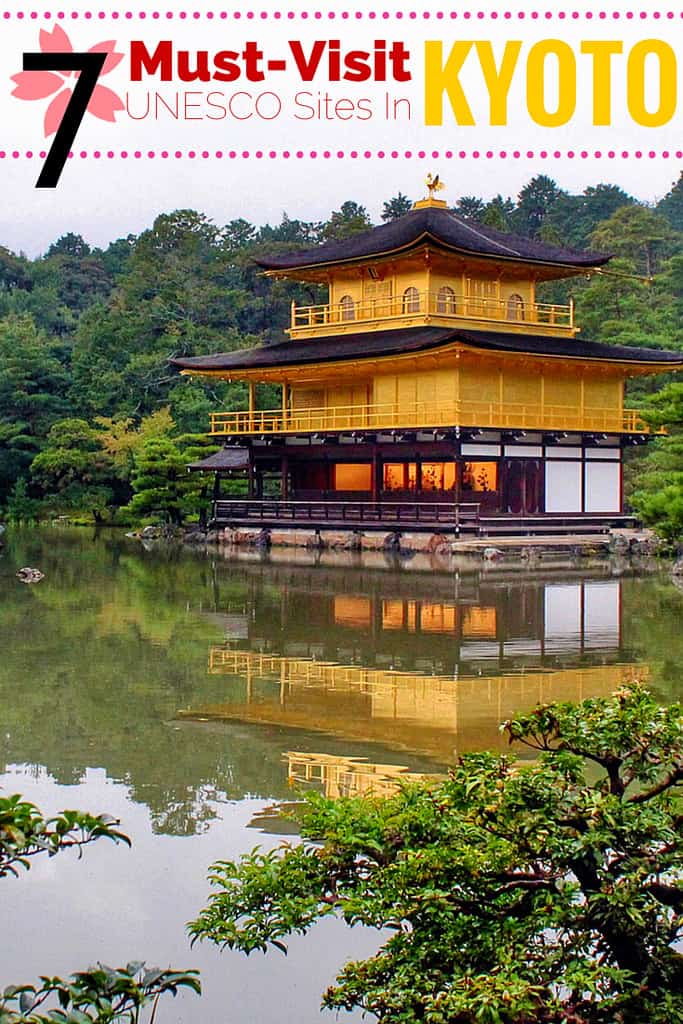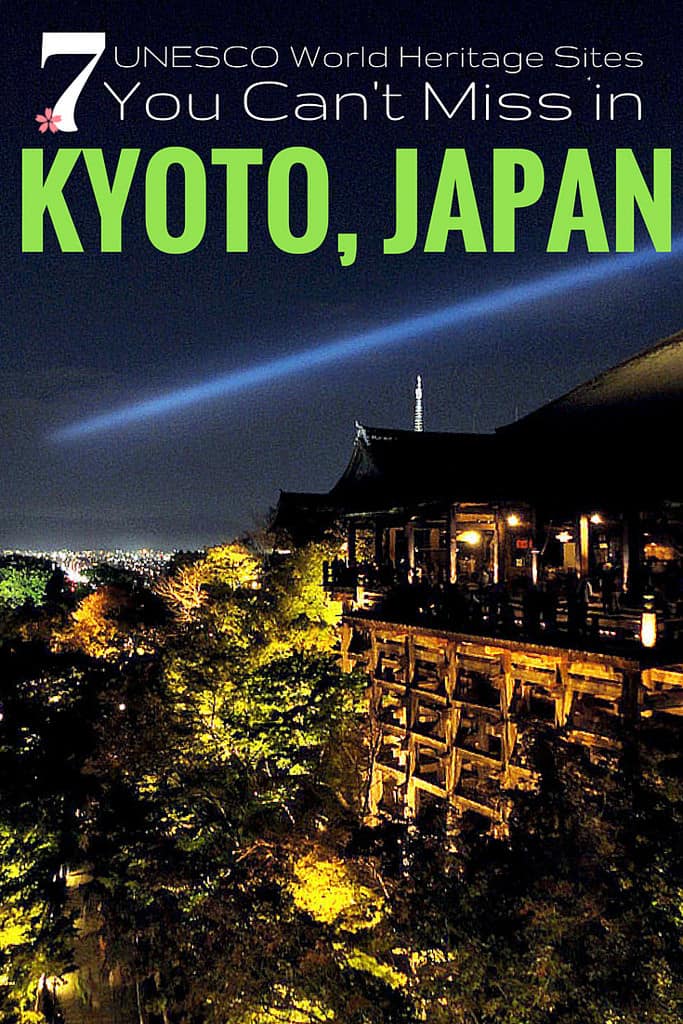Asia
7 MUST-VISIT UNESCO WORLD HERITAGE SITES IN KYOTO
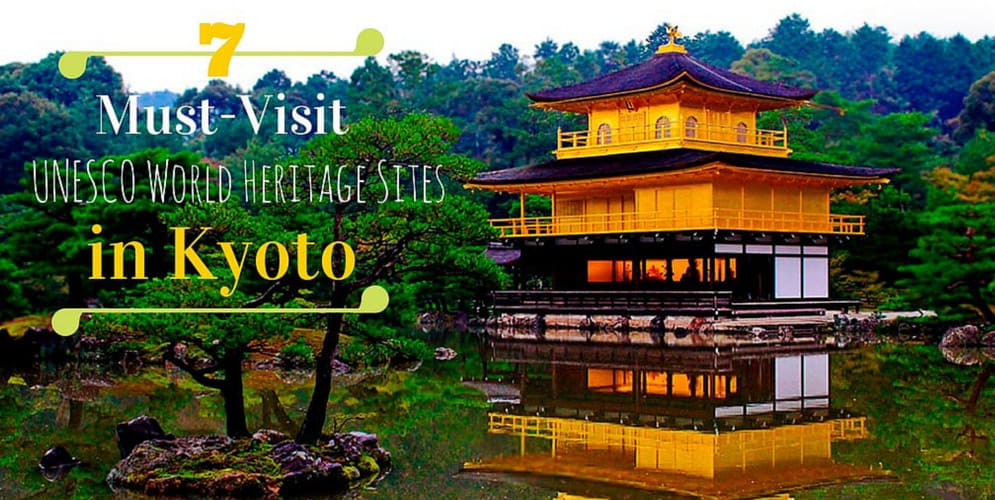
Next to Tokyo, Kyoto is the second most popular city for tourists to visit, and it should be. Kyoto is considered among the first capitals dating back to 794AD and today its become own Japan’s living cultural archives.
If you’ve come to see shrines and temples, you can’t go wrong visiting Kyoto. This city has more than 1600 Buddhist temples and over 400 Shinto shrines. Regardless of how you spend your time exploring, it would be impossible to leave Kyoto without running into one.
Many people who visit are interested in visiting the UNESCO World Heritage Sites in Kyoto, and for those who are, you won’t be disappointed as there are 17 of them. It would be impossible to see all of them given most people’s itineraries, and honestly you shouldn’t rush them because they are all beautiful in their own way and deserve ample time spent to appreciate them.
So instead of trying to fit in as many as possible, here are 7 of the must-visit UNESCO World Heritage Sites in Kyoto.
KINKAKU-JI
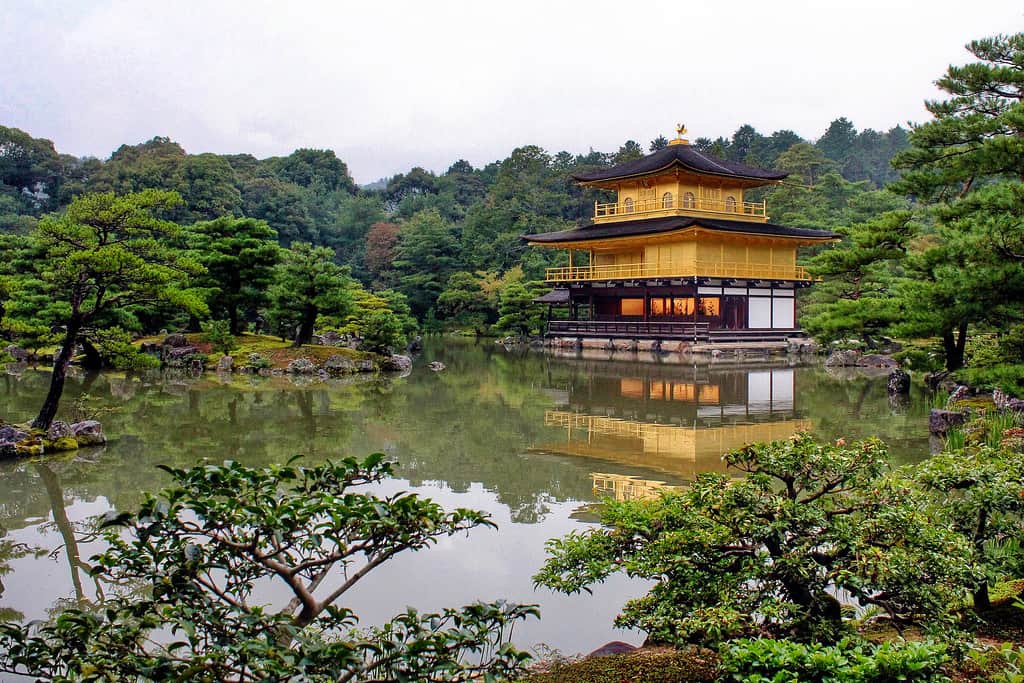
Kinkaku-ji is one of Kyoto’s most popular tourist attractions, as it’s well known across the world. Covered in gold leaf, the pavilion reflects brilliantly into the pond surrounding it.
Whether you visit during the fall when there are red momiji leaves contrasting the gold, winter when the gold is topped with pure white snow, or on a clear summer day allowing you to see the temple’s golden reflection– there is never a bad time to visit Kinkaku-ji.
The pavilion itself houses relics of Buddha and each floor features a different architectural style, but visitors are not allowed to enter the building. Even so, wandering the gardens and admiring the pavilion is worth the visit.
1 Kinkakuji-cho, Kita-ku, Kyoto City
GINKAKU-JI
The Silver Pavilion looks just like the Golden Pavilion, only… it’s silver. Or at least it was supposed to be. The plan was to cover the temple in silver foil, although that never came to fruition. Because of this, most people will say that when compared to Kinkaku-ji, Ginkaku-ji is nothing special, however, it’s the gardens that make this place special.
Possibly the best in Japan, in the garden you’ll find the “Sea of Silver Sand” and the “Moon Platform”. The sand garden is said to symbolize Mount Fuji and it is quite spectacular. The large pile of sand that represents Mount Fuji, or the “Moon Platform” is said to reflect the light of the moon and shine it onto the Silver Pavilion. Since this temple closes early evening onward, we may never know if this rumor is true.
2 Ginkakuji-cho, Sakyo-ku, Kyoto City
NIJO-JO
It’s hard to miss this castle, as it’s located in the center of Kyoto. Surrounded by a huge moat, the inside castle grounds feature a beautiful garden with shrines located around the premises.
Constructed in 1603 Nijo Castle may not resemble your typical castle as it’s a single-story flatland castle, but that doesn’t mean that it’s not impressive. The rooms inside are all beautifully decorated with paintings and gold leaf, and feature traditional rice paper sliding doors and tatami mats.
541 Nijojo-cho, Horikawa-nishiiru, Nijo-dori, Nakagyo-ku, Kyoto City
KIYOMIZU-DERA
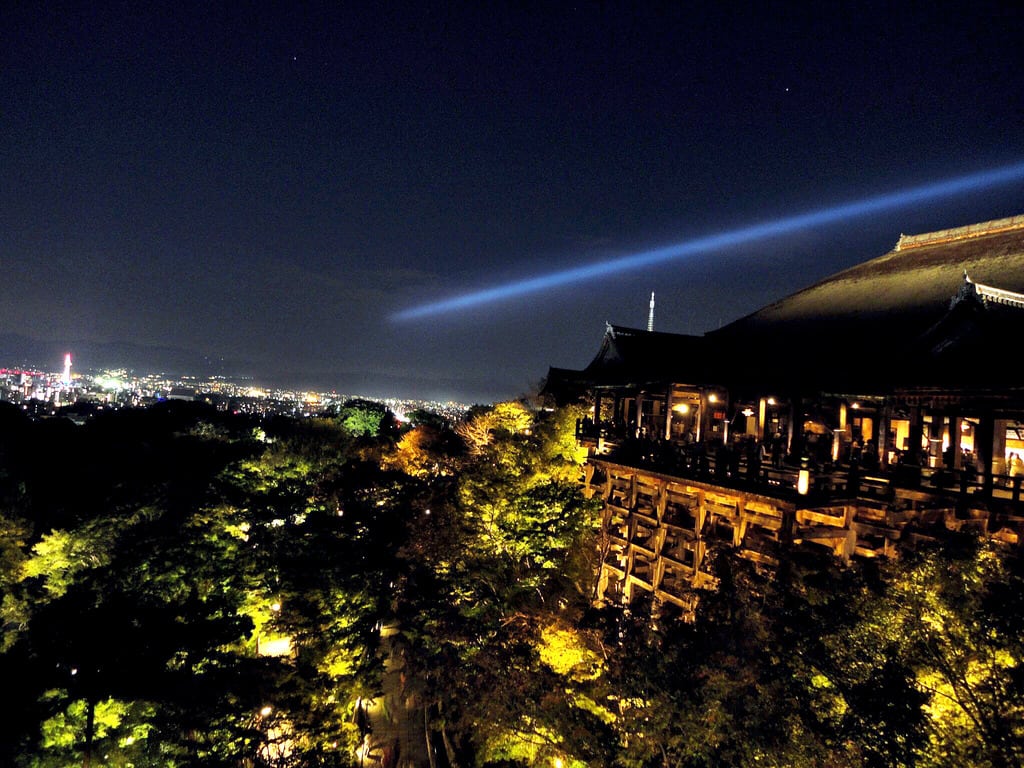
Located up on a mountain, Kiyomizu-dera is an impressive temple. The main hall is its biggest attraction as it was built solely out of wood without a single nail. It’s from the decks here that you can look out across much of Kyoto and as such is a popular sunset destination as it casts a romantic silhouette of all the buildings. Just be prepared for the crowds.
The veranda itself is supported by high pillars as it’s built hanging off of a cliff. Back in the Edo period people believed that whoever jumped from the 13m high cliff, and survived, would supposedly have their wish granted. Records have it that over 200 people have actually jumped and more than 85% survived. This practice is nowadays prohibited for obvious reasons.
1-chome, Kiyomizu, Higashiyama-ku, Kyoto City
RYOAN-JI
The world famous rock garden at Ryoan-ji is what draws most people to visit this popular Zen temple. Also called the Temple of the Dragon Peace, people come sit and contemplate the rock garden from the porch– sometimes for hours.
If you don’t know much about Japanese rock gardens, do know that the rocks and sand are meticulously groomed to represent something greater, usually the cosmos.
The remaining space at Ryoan-ji is made up of a giant forest with a large lake. This area is peaceful and the lake is often covered with flowering waterlilies, although it is not frequently visited as most people only go to see the rocks.
13 Ryoanji, Goryonoshita-cho, Ukyo-ku, Kyoto City
TO-JI
In addition to the actual temple, which dates back to the Heian Period, To-ji, or Kyo-o-gokokuji, Temple contains buildings dating back to the 14th to 17th centuries. The Lecture Hall (Kodo) houses the oldest extant Esoteric Buddhist statues in all of Japan. Most people visit To-jo to see the five-tiered pagoda, which is considered a National Treasure, as it rises above the landscape as a symbol of Kyoto. With a height of 57 meters, it is the tallest pagoda in Japan.
1 Kujo-cho, Minami-ku, Kyoto City
TENRYU-JI
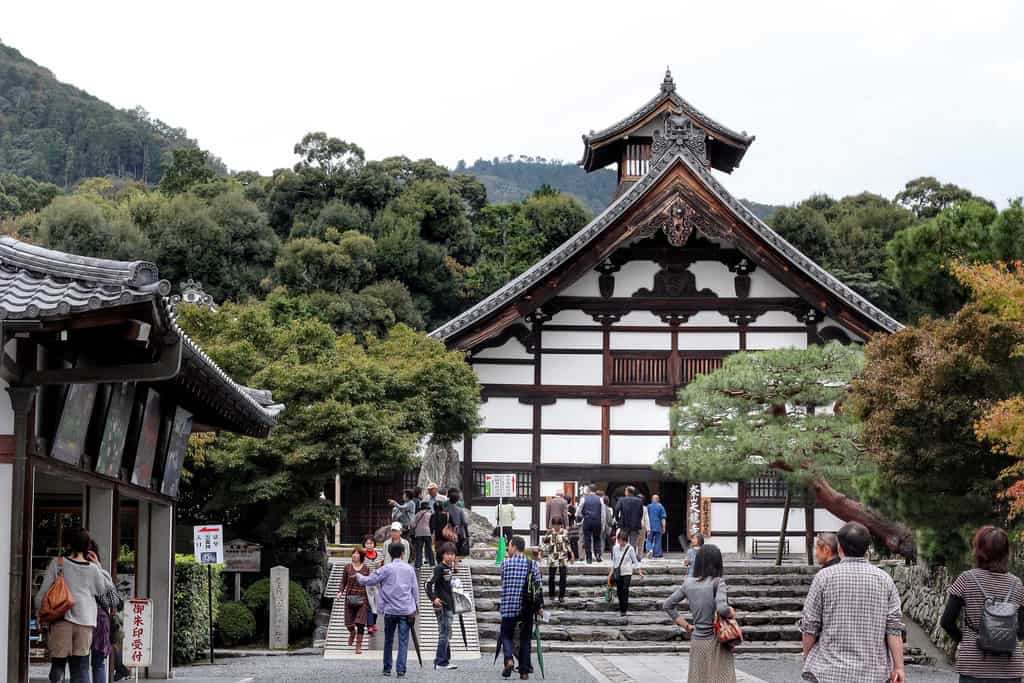
Tenryu-ji Temple is the first-ranked of the “Five Great Zen Temples” of Kyoto. It was established in 1339 by Shogun Ashikaga Takauji on the site of the Kameyama Detached Palace, for the purpose of consoling the spirit of Emperor Go-Daigo.
Behind the main hall is the Sogenchi Garden, which has been designated a Special Historic Site and a Special Historic Scenic Area. Enhanced by the surrounding landscapes of Mount Arashiyama and Kameyama, it is great example of aristocratic tradition blended seamlessly with Zen culture, displaying the beauty of the four seasons.
68 Susukinobaba-cho, Tenryuji, Saga, Ukyo-ku, Kyoto City

